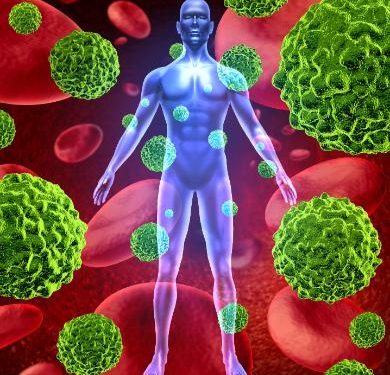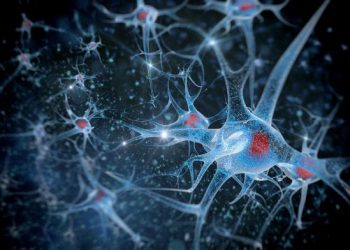When you have chronic myelogenous leukemia, your blood and bone marrow (the soft inner part of some bones) make large numbers of abnormal white blood cells. These build up and crowd out healthy blood cells, which cannot do their work.
Most people with CML have a change (mutation) in their genes on chromosome 9 and chromosome 22. This changes how the cellular machinery works.
Treatments
As with all cancers, chronic myelogenous leukemia starts when abnormal blood cells grow and crowd out healthy ones in the bone marrow. This happens when immature blood-forming cells called myeloid stem cells develop into blast cells. In a normal body, blast cells eventually become mature (fully functional) blood cells.
CML is a chronic cancer, meaning it grows very slowly. A patient can go years without experiencing any symptoms or needing treatment. However, a patient will need to be monitored closely. This includes a blood test, called a complete blood count, every week until the leukemia cells are stable or the spleen is no longer enlarged.
The first step of treating CML is to use targeted medicine to block the growth of cancer cells. These medicines are called tyrosine kinase inhibitors, or TKIs. They target a protein that is found on the surface of most cancer cells. These drugs are the main treatment for CML.
These medicines can help put the leukemia into remission. But the disease can recur, so patients also need chemotherapy to kill any remaining cancer cells. Usually, these are drugs that also treat acute lymphoblastic leukemia (ALL), such as vincristine, prednisone and doxorubicin. In addition, patients can get a combination of chemo and a stem cell transplant, or a bone marrow transplant.
A stem cell transplant replaces the bone marrow and blood-forming cells in the body with healthy ones. This is done by taking stem cells from the blood or bone marrow of another person, such as a sibling, and giving them to the patient through an infusion. The infused stem cells grow into and replace the blood-forming cells in the bone marrow.
It’s important to continue receiving follow-up care after you finish your treatment for CML. This ensures that the cancer doesn’t return and identifies any other problems caused by the treatments. Our doctors will watch for any signs of leukemia and provide you with ongoing follow-up care. This helps to keep your cancer in remission and improves your chances of a cure. We are one of the leading centers in the country for this type of treatment and have advanced expertise in understanding how to achieve and maintain remission with this type of leukemia.
Chemotherapy
The cancer cells in chronic myelogenous leukemia grow and multiply out of control. They build up in the bone marrow and blood, crowding out healthy cells and making it hard for them to do their work.
The chemotherapy treatments for this type of leukemia include drugs that kill cancer cells or stop them from growing, and drugs that can help your body fight the cancer. Chemotherapy is given by mouth or injected into a vein or muscle (intravenous). It can also be used to treat leukemia that has spread to other parts of the body (systemic therapy).
A gene mutation causes most cases of chronic myelogenous leukemia. It happens when a section of chromosome 22 swaps places with another part of chromosome 9. The result is a Philadelphia chromosome, named for the city where it was discovered. The Philadelphia chromosome drives the growth of abnormal white blood cells called blasts. These blasts are not mature enough to do their job properly and may cause problems such as infection, anemia, bleeding and fatigue.
Your doctor can diagnose chronic myelogenous leukemia by looking at your blood and marrow sample. They will also ask about your symptoms and medical history. Then they will do a physical exam and order tests to find out how severe the leukemia is.
This type of leukemia usually starts in the bone marrow, the spongy interior inside bones where blood cells are made. It affects only older adults and is less common in children.
The treatment plan for chronic myelogenous leukemia depends on whether it is in the early, accelerated or blast phase. Targeted therapy is usually the first choice. It is effective in the majority of people with this type of leukemia and can be combined with other treatments.
If your leukemia comes back after remission, you and your doctor may want to try a new treatment strategy or consider a clinical trial. Palliative care can help with the emotional, practical and spiritual challenges of treatment.
This information is provided by the National Cancer Institute (NCI). It is for educational purposes only and is not intended to replace the advice of your doctor or other health care provider. We encourage you to discuss any questions or concerns you may have with your provider.
Stem cell transplant
A blood or bone marrow transplant (BMT) replaces unhealthy blood-forming cells (stem cells) with healthy ones. It can cure chronic myelogenous leukemia in some patients.
Every cell in the body contains DNA that tells it what to do. The genetic instructions are stored in chromosomes. In CML, part of one chromosome moves to another chromosome and causes the stem cells to make more white blood cells than the body needs. This is called the Philadelphia chromosome.
The cancerous white blood cells build up in the bone marrow and then move into the blood. They crowd out the normal red blood cells and platelets. This causes anemia, which can cause fatigue, weakness and dizziness. It also increases the risk of infection and bleeding problems.
Treatment options for a patient with chronic myelogenous leukemia depend on the phase of the disease and other prognostic factors. Patients with chronic phase CML can be treated with a tyrosine kinase inhibitor, such as imatinib (Gleevec), dasatinib (Sprycel), nilotinib (Tasigna), or bosutinib (Bosulif). Ponatinib (Iclusig) is an option if the other TKIs stop working or the leukemia develops resistance to them.
If treatment isn’t effective, the leukemia can progress to accelerated phase or blast phase. In accelerated phase, the leukemia cells multiply more quickly than normal blood cells. They can attack other blood-forming cells and organs, such as the kidneys and liver. The signs and symptoms of accelerated phase include high fever, night sweats, weight loss, and tiredness. Blast phase leukemia cells are more likely to be resistant to standard chemo drugs than those in accelerated or chronic phases.
A high dose of chemotherapy damages fast-dividing cells, such as bone marrow cells. To treat a patient with chronic myelogenous or acute myeloid leukemia, the bone marrow is removed from the hipbone and then infused into the bloodstream with chemo to kill the cancer cells and restore the blood-forming cells. A procedure called reduced-intensity conditioning uses several types of medications to reduce the number of cancer cells in the bone marrow before the transplant. This can improve the outcomes of both autologous and allogeneic stem cell transplants for CML.
Immunotherapy
CML is caused by a problem with blood stem cells. Stem cells are the basic building blocks of the blood and bone marrow. They give rise to white blood cells, which help fight germs and other diseases. With chronic myelogenous leukemia, the bone marrow makes too many stem cells that grow into too many immature white blood cells, called blasts. These blasts don’t develop into mature white blood cells and can’t fight infections.
CML causes symptoms like a fever, tiredness, and a lot of white blood cells in the blood or bone marrow. It also causes a buildup of calcium in the blood, which can cause kidney problems.
The treatments for CML may include targeted cancer medicines, chemotherapy, or a stem cell transplant. Your doctor will talk to you about all of your options and the best treatment for you.
You may be able to get a treatment that works well for you by taking part in a clinical trial. These studies test new ways to treat cancer. They’re usually done with patients like you who aren’t getting better after other treatments.
Immunotherapy can boost your own immune system to find and attack the cancer. It’s a promising area of research, with several FDA-approved treatments and ongoing studies.
Some immunotherapies target the specific genetic changes that cause leukemia. Others target a protein that helps cancer cells grow and spread.
Your treatment will depend on the type of leukemia you have, the number of blasts in your blood or bone marrow, and any chromosomal abnormalities.
You’ll have regular tests and visits with your doctor to check how you’re responding to therapy. Your doctor will order blood tests and different types of scans to see how your body is working.
Talk to your doctor about any side effects you have during or after treatment. It’s important to report them, even if they seem small or unimportant. The more your doctors know about the effects of your treatments, the better they can make them. It’s also a good idea to ask your doctor about other treatment options if you’re not making progress.









